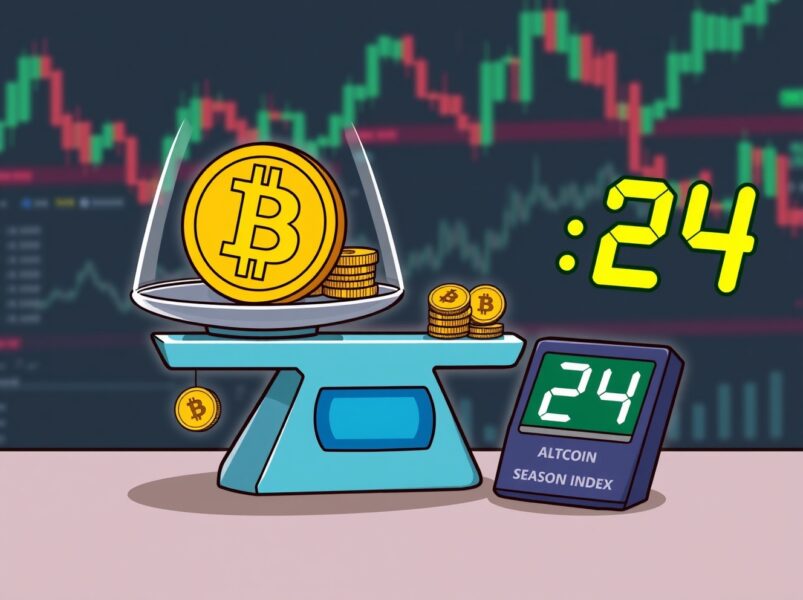Metaverse will revolutionize learning in the same way as Sesame Street | Opinion
Disclosure: The views and opinions expressed here belong solely to the author and do not represent the views and opinions of crypto.news’ editorial.
Fifty years ago, Sesame Street transformed living rooms into classrooms and redefined how kids learned. Today, the metaverse is picking up that torch — blending VR and AI to create immersive, personalized, and globally connected educational experiences.
- Sesame Street revolutionized children’s education by turning TV into an interactive classroom — and now the metaverse is set to do the same for digital learning.
- VR-based classrooms enable “experiential learning,” from exploring WWI battlefields to dissecting a 3D human body, making education immersive and hands-on.
- AI brings personalization, with lessons adapted in real-time, support for different learning styles, and even interactive “AI clones” of figures like Einstein or Socrates.
- Together, the metaverse and AI promise more inclusive, engaging, and dynamic education — breaking beyond the limits of traditional schools and online courses.
There’s barely an adult alive today who hasn’t seen at least one episode of Sesame Street. If you haven’t seen it, you’re the odd one out. The hit puppet show became a cultural phenomenon more than 50 years ago when it pioneered the idea of educational children’s programming, elevating the living room into a unique and engaging learning environment. Since then, children’s TV has never been the same.
Sesame Street did this through a clever combination of interactive teaching methods and an iconic cast of colorful and friendly puppet characters. Who doesn’t remember the likes of Big Bird, Cookie Monster, Elmo, Oscar the Grouch, and others, helping them to improve their numeracy, literacy, and emotional intelligence? The show was stunningly successful, absorbing an entire generation of kids through its relatable stories, introducing them to important concepts such as kindness, empathy, diversity, and inclusivity.
The use of puppets was ingenious, helping to make kids feel more comfortable and willing to engage, while its unique approach of addressing them directly made children feel as if the puppets were actually speaking to them, encouraging them to interact.
Most of us remember Sesame Street vividly because it made learning fun and accessible, and there is evidence that it has had a considerable impact on the development of children who were able to watch the show regularly. One of the most famous studies on the phenomenon found that kids who grew up watching the program in the late 1960s performed significantly better in elementary school than the average child who did not have access to it.
Without doubt, Sesame Street has left an indelible mark on our history, paving the way for an entire genre of kids’ TV shows focused on educating through entertainment, and now serving as the inspiration for an even more advanced educational medium.
Interactive learning anywhere
Just as Sesame Street showed how TV can be made into a fun and engaging tool for learning, the metaverse is building on that foundation, bringing interactive learning experiences to students in any location. The metaverse makes it possible for people from all over the world to come together and learn through engaging and interactive activities, leveraging advances in AI and virtual reality to create unique classroom environments.
These environments can be accessed from anywhere, and they’re uniquely able to facilitate “experiential learning,” where people engage with one another and practice the skills they learn in safe simulations. While still a relatively nascent concept, the metaverse has proven it can deliver superior educational experiences compared to traditional classrooms and online learning courses.
The secret of the metaverse is that it’s so much more immersive than anything that’s come before. In the same way that Sesame Street hypnotized a generation of children, VR-based classrooms can draw learners into an immersive, simulated world that’s more conducive to learning. Imagine, for instance, a student of history who is taken back in time to a First World War battlefield at the Somme, where they can interact with the AI-generated soldiers and officers to learn about what they experienced. Or else picture an Australian student who wants to study German and is instantly connected to German students who wish to learn English, speaking, and interacting together at the click of a button.
Such simulations are a game-changer, helping to bridge gaps between theoretical knowledge and its real-world application. Imagine, if you will, a student studying anatomy, exploring a realistic 3D model of a living, breathing human body, which they can actually poke around at, learning about the different organs and systems within. Such an approach doesn’t just enhance learning, but accommodates students with different learning styles.
Personalized learning with AI
Metaverse education can be made more personalized, increasing stimulation. Traditional classrooms can struggle to engage students properly, especially when there are large groups. But in a virtual world, lessons can be gamified and personalized to capture each student’s attention, while AI teachers can provide feedback in real-time, making the experience more dynamic and enjoyable. Students with disabilities can take advantage of customized learning environments with auditory or visual enhancements that accommodate their particular needs, making education more inclusive.
In addition, there are AI algorithms that can analyze the performance of each student, adapting the learning content on the fly based on their specific needs. This ensures each one can learn to master new concepts at their own pace and move on to more complex subjects when they’re ready.
Perhaps the most compelling idea is that of AI clones. Who better to teach physics than a clone of Albert Einstein? A student would be able to engage one-on-one with the world’s most legendary physicist and ask him for a layman’s explanation of his theory of General Relativity. Alternatively, one might prefer to debate with legendary Greek philosophers such as Socrates or Plato. These kinds of AI clones are only just making their way into VR-based learning, but they’re a fascinating example of how metaverse education goes beyond what traditional schooling can offer.
AI can help metaverse learners in other ways too — for instance, generative AI assistants can provide students with support around the clock, offering guidance, answering questions, or scheduling a meeting with their human teachers. Students will also be able to learn on a schedule that’s more convenient for them, instead of having to organize their lives around traditional classroom hours.
Learning will never be the same
Sesame Street has endured for more than 50 years thanks to its ability to adapt and evolve to suit the demands of different cultures and eras. It transformed TV into an engaging and educational platform, and now the metaverse promises to build on this decades-long phenomenon.
By blending AI with virtual worlds to create more dynamic and interactive learning simulations, the metaverse can elevate engagement far beyond any traditional classroom or TV show. The future of education is going to be more interactive than ever before, engaging with kids and adults alike to redefine how the next generation acquires its knowledge and skills.
You May Also Like

Crucial US Stock Market Update: What Wednesday’s Mixed Close Reveals

Altcoin Season Index Stalled at 24: What This Crucial Metric Means for Your Portfolio

